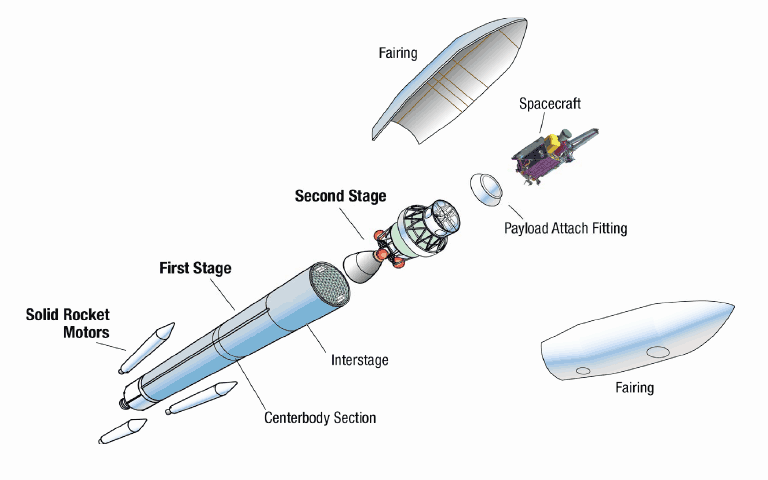There's a common law of our lives that we learn at a very young age. Things that come up must come back down. The issue we've been fighting for the past century is finding a way to throw ourselves up without the rapid and unfortunate descent that usually follows. We've done an exceptional job in this regard, to the point where we just returned a man from space after spending an entire year aboard the ISS.
Our current problem lies in how little we consider the vehicles that carry our astronauts into space. SpaceX is striving to create a rocket that can carry a payload to orbit, and then land back on Earth with a majority of its original body still intact and able to be reused. This might seem unusual, as you never see a car or plane arrive at its destination missing wheels or a wing, but rockets work much differently.
As you can see, in a conventional rocket, the actual craft is a fraction of the size of the launch vehicle. The remainder of the craft is left to burn up in the atmosphere, or continue to orbit the earth until it becomes unstable enough to fall back down to Earth. This causes a problem for regular citizens like us for two main reasons:
First, our space program is very cost intensive, due to this. According to NASA, the average cost to put one kilogram of mass into orbit is $10,000. This cost varies for different rockets, but the principle is the same. NASA requires a high level of funding to do the work they hope to perform. Congress has been steadily decreasing space funding since the space race in the 1960s, and there's small chance that this pattern will turn itself around. Therefore, unless NASA finds a way to reduce costs of space travel, we as citizens would have to pay more to expand our reach in space. For some that's worth it, however this isn't meant to be an opinionated post, just a statement of fact.
Secondly, the pieces of the rockets that stay in orbit don't leave immediately, it can take years for the orbit to become unstable enough to enter the atmosphere. This means that the debris from rockets will remain in space long after the spacecraft has completed it's mission. In the GIF below, we can see how the problem of space debris has become a huge problem that is continuously getting worse.
A higher concentration of debris creates a higher chance that an operating system in orbit will be struck, and the damage from a collision such as this one would be extremely severe. Orbiting objects are travelling around 17,000 mph. At that speed, even flecks of paint can leave pits in the body of spacecraft. Not only does the debris cause a physical risk to satellites, but the dense cloud can also interrupt communications between satellites. This matters to us, since communication between satellites is pretty much the basis of modern society. Cell phones, GPS, weather forecast, many important facets to our fast-paced society hinge on the fact that these satellites can communicate with each other.
How again does SpaceX come into this? Their idea, to create what is essentially a reusable rocket, would cut debris down immensely. Not only would debris be reduced, but the cost of launching a payload would be drastically reduced as well. While all of this sounds well and good, an idea is just an idea, until it's actually put to the test. If you watch the following video, you can see that SpaceX couldn't agree more.
SpaceX has performed landings on ground before, but never a barge. This opens up the possibility of launching to wherever in orbit the objects need to be, with no worry about whether or not the ground will be beneath the rocket when it touches back down.
Why should we care that SpaceX landed their rocket on a ship? You don't have to, but understand how much it means to our world when technology improves, when the price of spaceflight is reduced to a level completely unheard of in today's time.To me, that's something worth celebrating.























